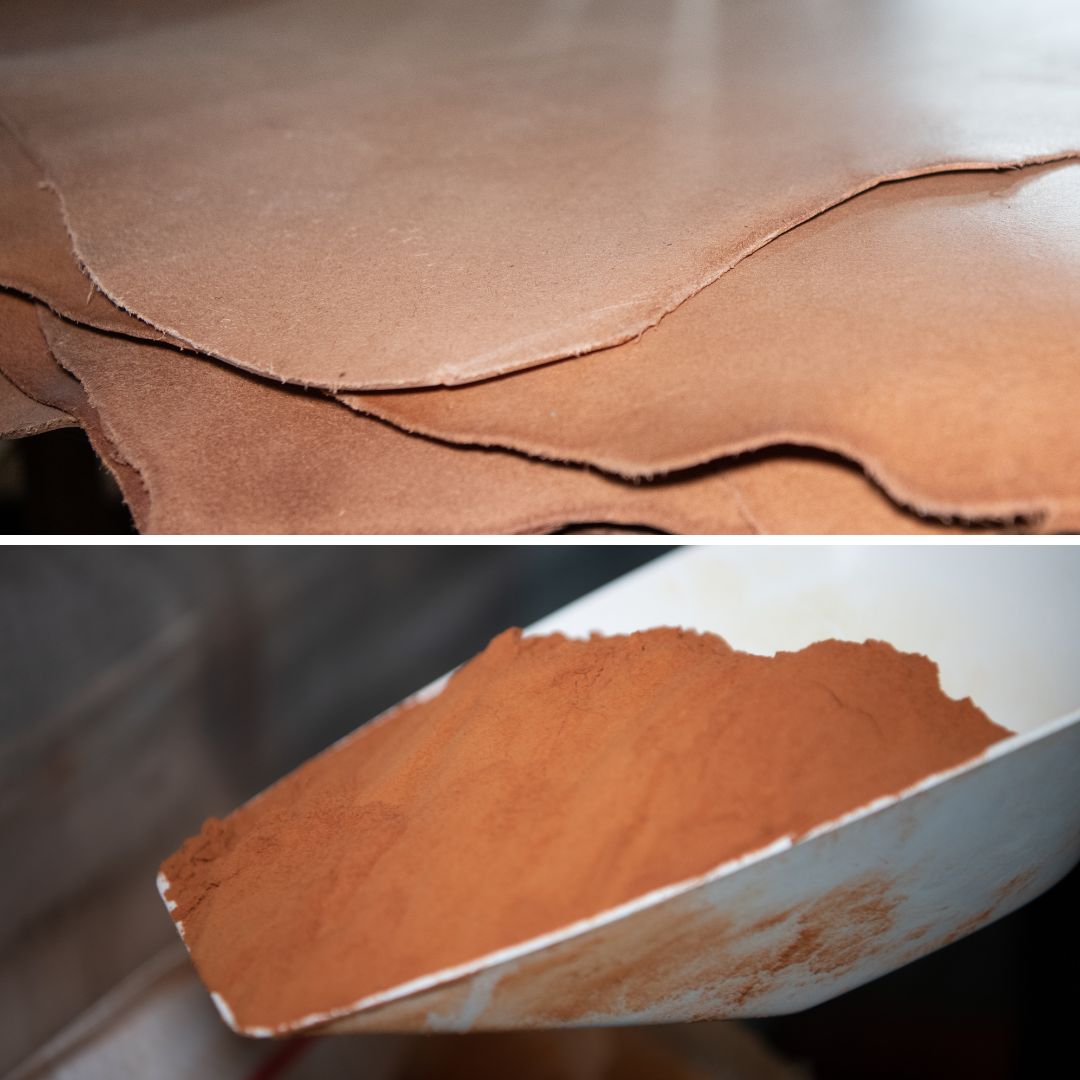 It is estimated that more than 80% of the world's wastewater is discharged into the environment without adequate treatmente. In 2020, 69% of the annual amount of water used came from agriculture, 19% from industry and 12% from domestic use. Experts estimate that by 2050, total water consumption will increase by 20 to 30%. But does this mean that tanneries have done nothing in recent decades to reduce the amount of water used or to improve wastewater treatment? Tanneries must meet strict environmental standards to manage their water use and treat wastewater before it is discharged.
It is estimated that more than 80% of the world's wastewater is discharged into the environment without adequate treatmente. In 2020, 69% of the annual amount of water used came from agriculture, 19% from industry and 12% from domestic use. Experts estimate that by 2050, total water consumption will increase by 20 to 30%. But does this mean that tanneries have done nothing in recent decades to reduce the amount of water used or to improve wastewater treatment? Tanneries must meet strict environmental standards to manage their water use and treat wastewater before it is discharged.
Optimization of water use in tanneries
The leather production requires the use of water at several stages of production, and the amount used also depends on the type of tanning performed.
In its 2021 sustainability reportUNIC (the Italian national association of the tanning industry), reported that since 2003, water consumption by Italian leather manufacturing companies has dropped by 18%.
Similarly, in its 2020 social and environmental report, COTANCE reports that between 2016 and 2018, European tanneries consumed an average of 7% less than in 2010 and 2011.
There are several methods to reduce water consumption in tanneries:
- Water recycling: It is possible to recycle the water used in different stages of production, thus reducing the consumption of raw water as well as wastewater discharges. The recycling can be internal or external to the tannery. It should be noted that water recycling in tanneries requires regular monitoring and maintenance to ensure the quality of the reused water and to avoid the risk of cross contamination.

- Improved efficiency: the production process can be optimized to reduce water consumption, for example by using state-of-the-art technology. This is what Radermecker Tannery has done with its new finishing machine, which significantly reduces chemical consumption and has a self-cleaning water and pollution control system. Our service provider Tannery Projects, who has been involved in many aspects of our move in 2019, explains in video how our new finishing machine works, which significantly increases our environmental performance.
- Use of substitute products: it is possible to replace certain chemical products used in tanneries by more ecological products that require less water. We remind you that the majority of the leathers of Radermecker Tannery are vegetable tanned.
- It is also possible touse skins from ecologically raised animals. At Radermecker Tannery, we select the skins from selected farms, mainly in France and Germany. When the raw hides arrive, we know the region of origin of the hides.

- Water management practices: Effective water management practices can be implemented, such as using tracking systems to monitor water use and setting water use reduction targets.
It is important to note that the implementation of these methods varies depending on the size of the tannery, the quality of the feed water, and the chemicals used, but in general they contribute significantly to reducing water consumption and environmental impacts.
Wastewater treatment by tanneries
Tanneries produce wastewater containing chemical compounds and organic matter that can be harmful to the environment and human health. It is therefore important to treat this water before it is released into the environment.
There are several common methods of physical-chemical treatment of wastewater in tanneries, which aim to remove organic and inorganic pollutants. It is a combination of physical and chemical treatment of wastewater:
Methods used within Radermecker Tannery
At Radermecker Tannery, mineral-laden water accounts for 5% of total discharges.

- Flocculation: This method uses chemicals to aggregate suspended particles in the wastewater, forming flakes that can then be removed by settling.
The water loaded with plants, grease and finishing products represents within Radermecker Tannery 95% of the total discharges. We apply a biological filter composed of a mix of the 3 methods below and thus create sludge called "biological" that we can revalue with the farmers for the spreading of the fields.

-
Neutralization: This step consists of adjusting the pH of the water to remove any acids or bases that may be present. The control of the PH of the wastewater is important because it can have an impact on the performance

wastewater treatment processes and on the quality of the water released into the environment. The pH is a measure of the acidity or basicity of a solution, it is measured on a scale of 0 to 14, where 7 is neutral, less than 7 is acidic and greater than 7 is basic. At Radermecker Tannery, our craftsman David is in charge of checking the pH level of our wastewater every day. If necessary, and in order to adjust the PH, we add hydrated lime.
- Oxidation: this method uses chemicals to oxidize organic components and make them more easily removable by filtration or decantation.
- Clarification or decantation: this stage consists of eliminating the particles suspended in the water by using decanters or filters.
Other physical-chemical treatment methods
- Coagulation: this method uses chemicals to neutralize the electrical charges of particles suspended in the wastewater, making them easier to remove by decantation or filtration
- Biological filtration: This step consists of using bacteria to break down the organic matter present in the water. Microorganisms are used to remove organic pollutants from the wastewater.
- Disinfection: This step consists of killing the microorganisms present in the water by using chemicals such as chlorine or ozone.
- Absorption : This step involves using materials such as activated carbon to remove chemicals and heavy metals from the water.
Wastewater treatment plant: economic or ecological solution?
If the wastewater is not treated and discharged directly, taxes are imposed on the tanneries to cover the costs of wastewater treatment by the municipality. In Belgium, our operating permit ensures a 100% treated water agreement at the end of the cycle.
It governs by 2 strict rules:
- respect of a strict water discharge standard with a prohibition to exceed it
- taxes according to various concentrations of water below this standard. The more the water is clean, the lower the tax.

The creation of the water treatment plant in 2019 within Radermecker Tannery was a real investment allowing the company to be well below the standards in force. The amount of the taxes does not justify the investment but it is well in a concern of responsibility of company that Radermecker Tannery committed itself in this biological step. In view of the difference between the taxes and the cost of the treatment plant, Radermecker Tannery hasreally had an ecological and environmental will.










